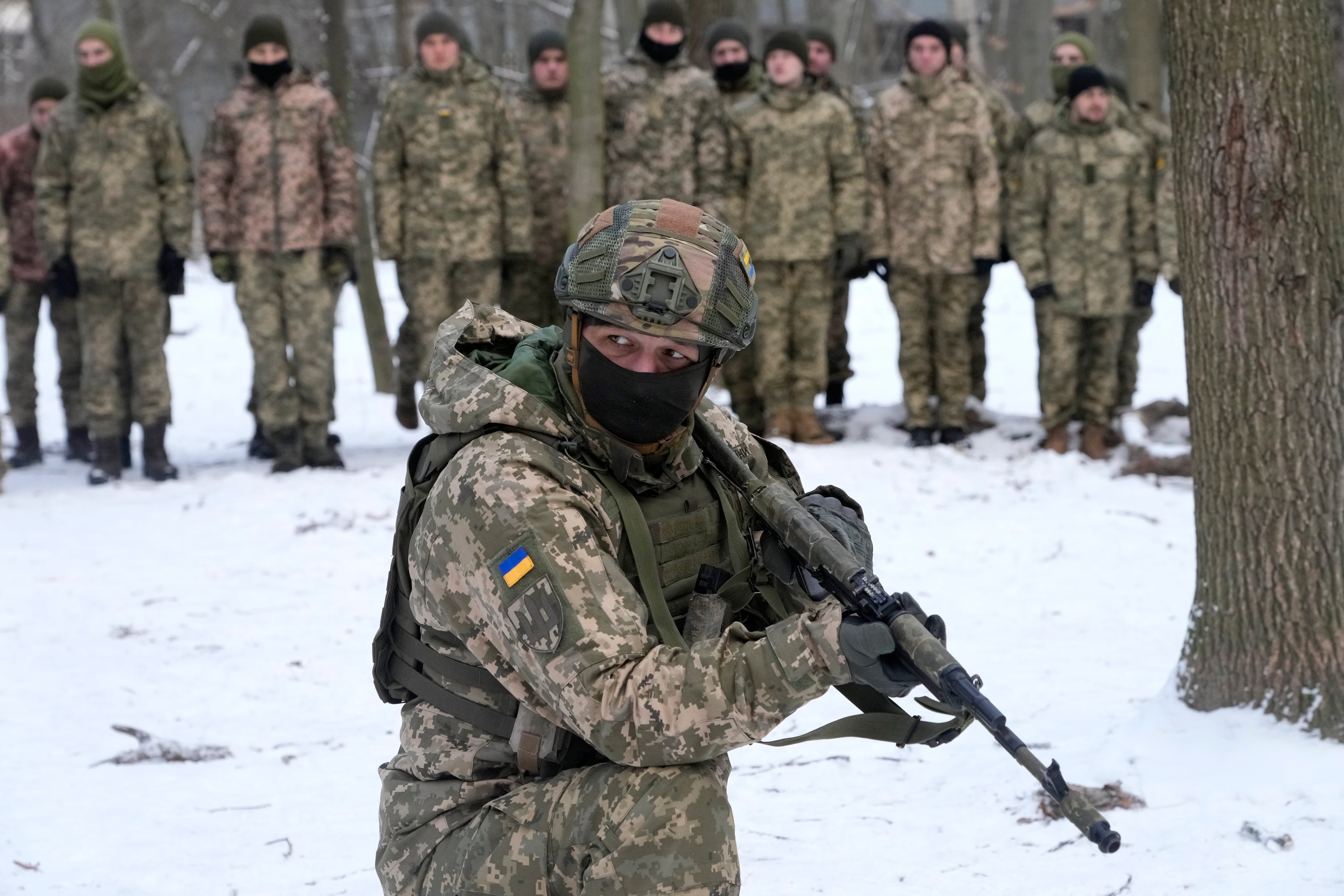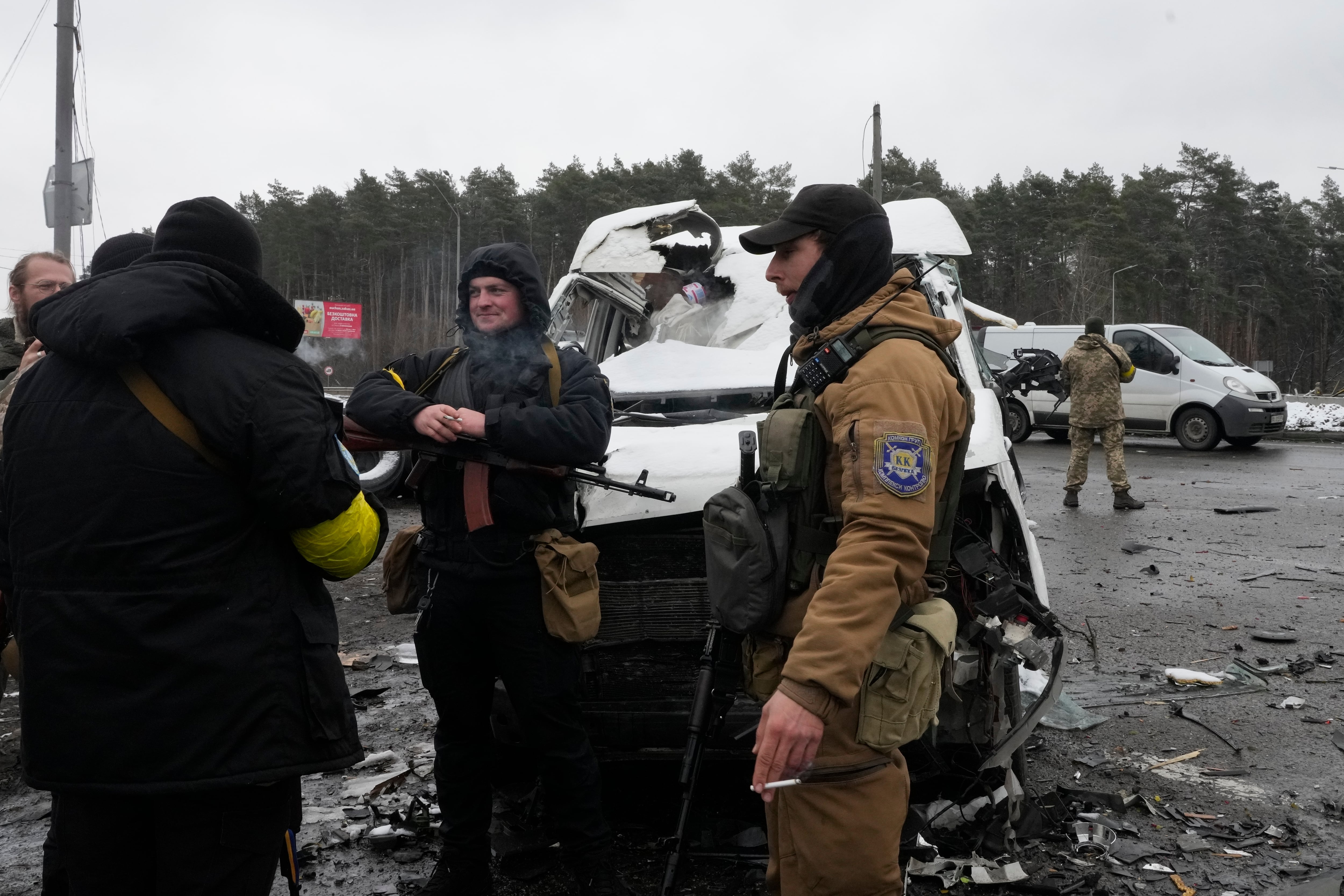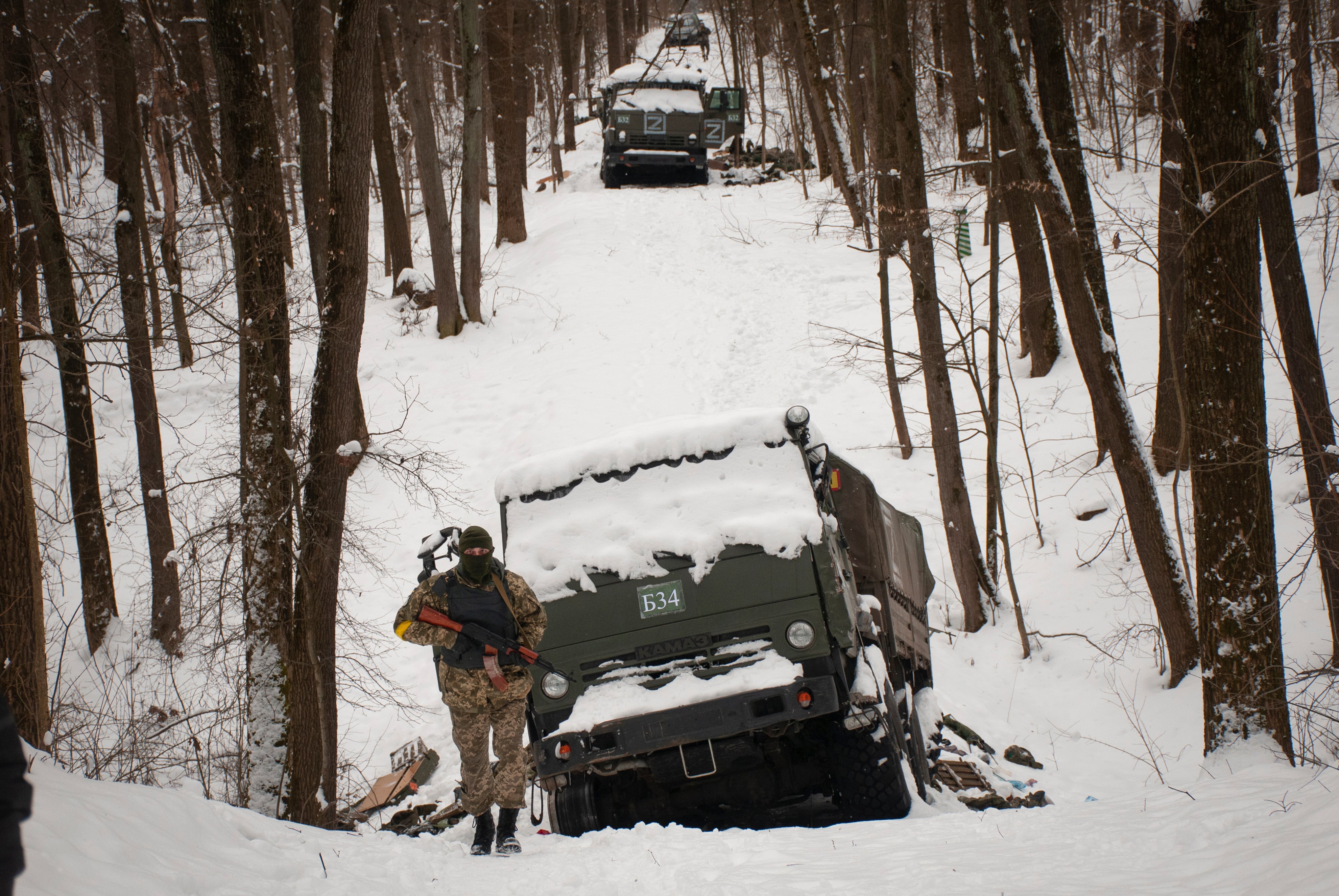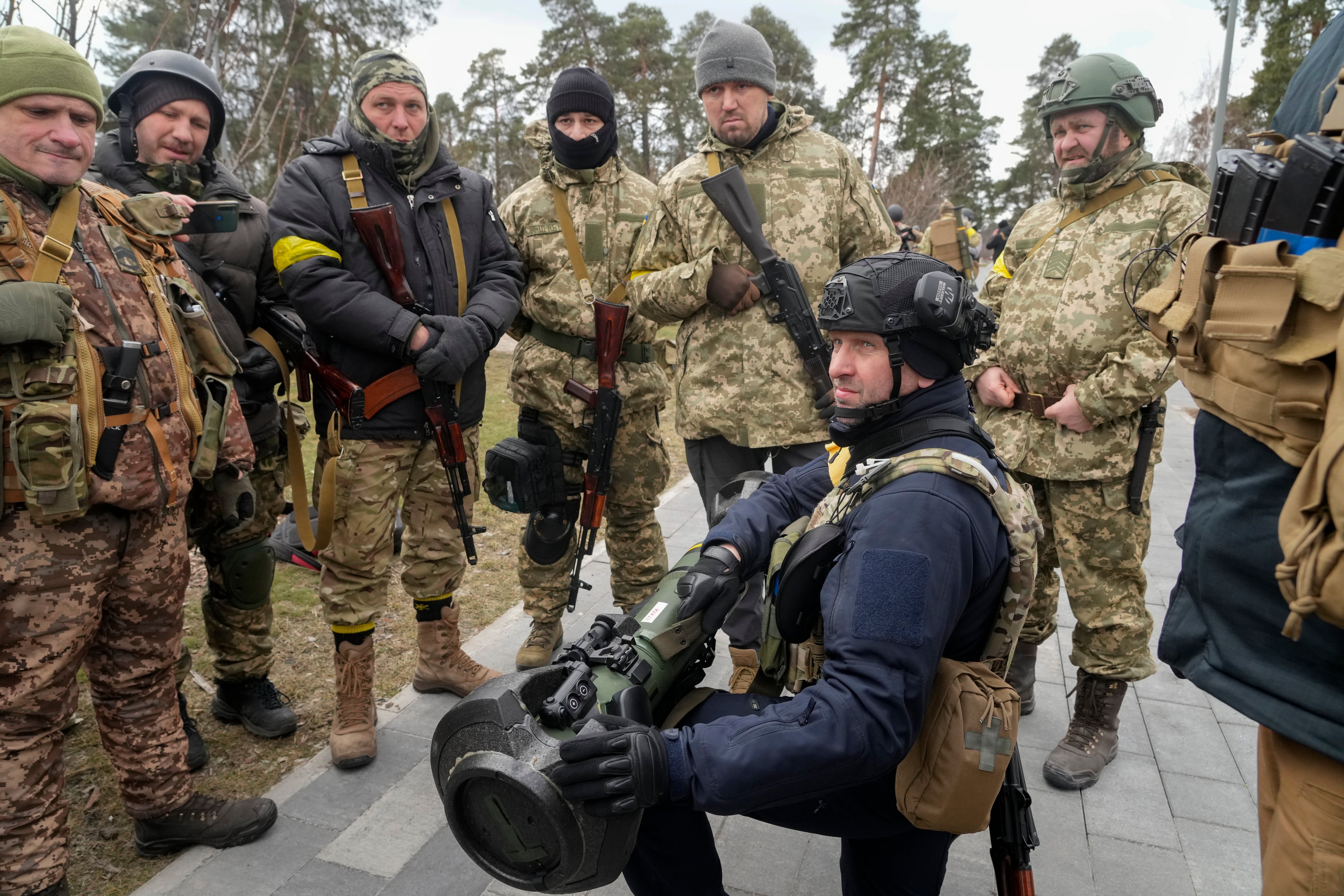The vast majority of Ukraine’s volunteers would never pass the physical fitness tests of the U.S. Army. And yet earlier this year, they pulled off a feat almost unparalleled in modern warfare: they helped defeat one of the largest standing armies in the world and held the capital. The Battle of Kyiv proved that volunteers could shape the course of a war, which holds important implications for the future of war, especially between large powers and their smaller neighbors.
When Russia’s 150,000-man army invaded Ukraine from multiple directions on Feb. 24, many analysts thought Kyiv would fall in a matter of days. What these analysts and the Russians did not anticipate was the will and capability of Ukraine’s “volunteers” and the important role that they would play in Kyiv’s defense. That is because the Russians expected the resistance to resemble the same feeble forces they witnessed in 2014, when they invaded and annexed Crimea with ease.
The importance of the volunteers cannot be understated. We just returned from Kyiv, where we interviewed dozens of Ukrainian Army, Territorial Defense Force and civilian volunteers, as well as visited dozens of sites. It was clear from the onset and confirmed throughout our visit that volunteers played a critical role in the defense of Kyiv, yet their role has not been systematically studied.
When tens of thousands of Russian troops amassed along Ukraine’s border in 2021, Ukraine sought to formally incorporate its volunteers into its national defense. Last year, Ukraine’s parliament passed a law “on the foundations of national resistance,” that took effect in January and established a Territorial Defense Force as a stand-alone branch within the military. The force included 10,000 career positions, supplemented by 120,000 civilian reservists organized into 20 regional brigades.
Russia initiated the invasion before Ukraine could formally organize its Territorial Defense Force; nonetheless, Ukraine was ready to arm its volunteers. In the days after the invasion, tens of thousands of Ukrainians poured into recruitment centers throughout Kyiv and around the country to receive an AK-47 rifle and two magazines. Lacking a formal structure, these volunteers largely self-organized to establish defensive positions within their towns. It was not until the defense of Kyiv was nearly over that these volunteers became formally organized. For example, the Territorial Defense Force battalion in the small city of Bucha, a city that played a critical role in the defense of Kyiv and is known for atrocities committed there, was not formally organized until March 31.
Who are the volunteers?
Most of the volunteers we met were male, but women also serve in combat and noncombat roles. Indeed, these volunteer units constitute a broad cross-section of Ukrainian society, ranging in age from 18-60; with some younger and older. All the volunteer fighters we met were highly motivated, even if they might not be able to pass a standard military physical exam.
When asked who gave them their orders during the opening days of the war, many provided similar answers: “No one. I acted on my own.”

Upon seeing a bridge or road unguarded, many volunteers took it upon themselves to pull other volunteers to provide the necessary defense. In some ways, it was the perfect execution of the U.S. Army’s mission command. Despite lacking true mission orders, each volunteer clearly understood the commander’s intent—defend the capital—and exercised the disciplined initiative to accomplish the mission. Everyone we talked to, both regulars and volunteers, trusted those around them. Volunteers and regular forces co-mingled throughout the defense of Kyiv.
A bridge too far
Take the ambush at Giraffe Bridge. Ukrainian National Guard and active duty forces defended against the Russian air assault at the Hostomel Airport on Feb. 24, but the Ukrainian regulars largely pulled back to defensive lines closer to Kyiv following their tactical victory. This left volunteers to defend forward of Kyiv’s main defensive lines, somewhat analogous to skirmishers in America’s Civil War defending forward of regular lines. In Kyiv’s northwest, regulars defended along the Irpin River, leaving the volunteers to lead the defense forward of the river in small cities such as Bucha and Irpin that sat just outside Kyiv’s city limits.
While many are familiar with the alleged war crimes Russians committed in Bucha and Irpin, less known is that volunteers, supported by regular army forces—primarily artillery—conducted much of the fighting there. The alleged Russian atrocities appear to be a direct result of the effectiveness of the volunteers as the poorly trained and poorly led Russian soldiers took out their frustrations on Ukrainian civilians.

By March 1, Russian forces had reached Bucha and were advancing on Irpin, a city of 60,000 just outside Kyiv. The Bucha River separates the two small cities, so the Russians had few routes into the city. The Ukrainians established an ambush on the primary route into Irpin. Ukrainian regulars established a defensive position along the Giraffe Bridge across the river in Irpin, with volunteers occupying positions along the road in Bucha.
As was common in the early stages of the war, the poorly trained Russians advanced as if they were on parade as opposed to expecting contact with the enemy. When the lead vehicle approached the bridge, Ukrainian regulars destroyed it with an anti-tank missile at the same time volunteers destroyed the trail vehicle. The closely packed convoy on the narrow street became pinned and an easy target for Ukrainian artillery which destroyed the entire convoy. Over the ensuing weeks, the Giraffe Bridge would see eight more similar skirmishes between Ukrainian volunteers and Russian soldiers.
Tank ambush at Brovary
On the east side of the Dnipro River, volunteers armed with RPGs and special operators armed with Stugna anti-tank missiles engaged a slow-moving Russian tank battalion.
Together with artillery, the Ukrainians destroyed a surprising number of tanks and forced the rest to flee.
Days later, the Russians would eventually enter the city, but that was as close as they would get to Kyiv from the east. On April 2, the Ukrainian forces recaptured the city and Russia troops aborted their attempt to seize the capital.
Volunteers as sensors
Volunteers also provided an important intelligence role. When Russian forces advanced toward Kyiv’s northeast, they established a resupply and refueling point in the town of Bervytsya.
An older Ukrainian woman living across the street notified appropriate authorities of the Russian position. Hours later, the Ukrainian military struck, killing all the Russians and decimating their position.

Luckily, the old woman and her house were unharmed. This was not a typical Western neighborhood that includes sidewalks, curbs and a wide paved street. It was a rural town with a narrow gravel road. Despite her house being less than 25 yards from the exploding ordnance, it, amazingly, suffered no damage.
Lessons learned
What the battle for Kyiv shows is that volunteers and local militias are a necessary component for smaller nations’ militaries. With a defense budget roughly 10% the size of Russia’s, Ukraine has sought NATO membership to enhance its defense, but membership seems unlikely, at least in the near term. A large standing army is prohibitively expensive, and Ukraine cannot match Russia battalion for battalion, so a volunteer force is an effective way to bolster its defense.
The battle also shows that civilian populations can be just as effective as technological sensors. Despite Russian electronic warfare and cyberattacks, Ukrainians were able to maintain communications and call in the positions of Russian forces. Rarely were calls made to a formal 911 call center characteristic of the United States. Often it was through communications apps, with civilians or volunteers communicating with someone in the military who they knew. That contact would then transmit intelligence to the right person.
Some of the volunteers we observed had extremely good weapons. When we asked how they obtained them, they said they retrieved them from Russian forces at Hostomel and other locations. Often, it was the only way for volunteers to get machine guns and RPGs since the Ukrainian Army lacked sufficient numbers of these weapons to distribute to volunteers.

But volunteers require the support of a conventional army to be most effective. Just as infantry is most effective when fighting as part of a combined arms formation, the same goes for volunteers. While we heard stories of smaller volunteer teams engaging vehicles with RPGs, they are not sufficient against larger formations. The large ambushes at Bucha, Brovary, and other locations often involved a mix of volunteers, special operations forces, and the regular army.
To be sure, any decisions to use civilian volunteers can put civilians at risk. Any civilian that directly participates in fighting loses their protected status under the laws of war and is considered a combatant. Furthermore, even civilians who are just providing information can find themselves at risk of reprisals from frustrated and poorly disciplined invaders like seen in Ukraine. How and when civilians provide information must be a calculated, protected process.
Perhaps most important, and a lesson that the Finns have learned, is that volunteers enhance deterrence. While Ukraine was unable to deter Russia’s invasion, the impact of these volunteers in the current war may serve as a deterrent to future wars. The Baltic states have embraced this strategy. And this also has implications for deterring a Chinese invasion of Taiwan; China is much less likely to invade if it believes the entire population will take up arms against it and this force can actually be effective.
The defense of Kyiv demonstrated that volunteers can play an important role in maneuver and guerrilla warfare, although the latter was only minimally observed in the defense of Kyiv. Yet the impact of volunteers is likely more muted in the attrition warfare currently being waged in Ukraine’s east. With more static positions and shorter supply lines, it offers the volunteers fewer opportunities to leverage their strengths. Expect to see them organized into more traditional battalions as they were in 2014.
The war is far from over, but Ukrainian volunteers have left an indelible mark on how smaller nations fight.
Liam Collins is the executive director of the Madison Policy Forum, a member with the Council on Foreign Relations and a fellow with New America. He also served as a defense advisor to Ukraine from 2016-2018. He is a retired U.S. Army Special Forces colonel with deployments to Iraq, Afghanistan, Bosnia, the Horn of Africa and South America. He is co-author of the forthcoming book, “Understanding Urban Warfare.”
John Spencer is the chair of urban warfare studies at the Madison Policy Forum. He served 25 years as a U.S. Army infantryman, which included two combat tours in Iraq. Together, he and Collins traveled to Ukraine in June 2022 to research the defense of Kyiv. He is the author of the book “Connected Soldiers: Life, Leadership, and Social Connection in Modern War” and co-author of the forthcoming book, “Understanding Urban Warfare.”
Have an opinion?
This article is an Op-Ed and as such, the opinions expressed are those of the authors. If you would like to respond, or have an editorial of your own you would like to submit, please email Military Times senior managing editor Kent Miller.
Want more perspectives like this sent straight to you? Subscribe to get our Commentary & Opinion newsletter once a week.





